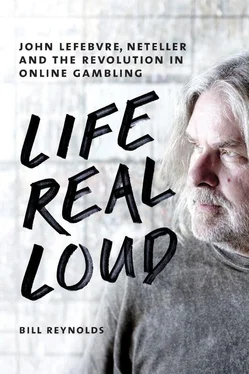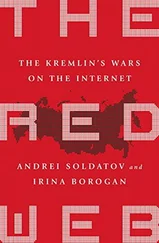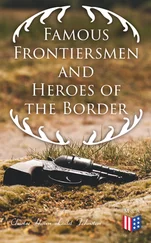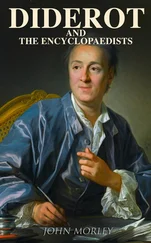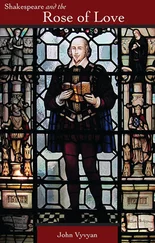“Okay, I’m going to slap my thigh — like this — and every time I slap my thigh you’ve got to go, ‘Ow!’ Let’s try it, okay? On three … One, two,” slap.
“Ow.”
“No, no, say it like you really mean it, say it like it really hurt you.” Slap on knee … “Owww!”
“Okay, try one more. Slap on knee …
“Owww!!!”
He’s whispering to me, “That’s really good.” So then he slaps his knee again and I don’t say anything, so he looks up at the door and there’s my mom …
I used to watch him shine his shoes and put on his putties. Army guys had pants that go down below your knee. Then you had a little chain to hold them down, so they puff downwards.
Louise argues that John doesn’t really remember all those things — he’s actually putting images and stories to things she told him. Or, equally plausible, these recollections have subconsciously metamorphosed over the years, through family storytelling and faded black and whites, into memories. “He knows of his dad from what I’ve told him. I don’t think he remembers his dad that much, actually. I asked him once, ‘Do you remember his face or the jokes he told?’ It’s hard to tell if John remembers or he remembers what we’ve talked about.”
Lefebvre claims to remember “tons of things” from before he was three years old:
I know I do because they’re memories that have my father in them. I ask other guys and they say they don’t remember anything from that time. But really they probably do, they just don’t realize that it was from when you were three because you don’t have that kind of temporal litmus.
Anyway, my dad was a soldier. I think he was born in northern Ontario — Espanola. My grandfather Lefebvre was from there. And my grandmother Lefebvre was a Masicot. They were both French. Emily, my daughter, can speak French. My mother can struggle through. I know enough to ask which way is the No. 14 bus.
There wasn’t that much influence linguistically, because although my grandfather was ethnically French Canadian he despised people who made a point of only speaking French. He was always shooting off his face—“Those asshole Frenchmen, why can’t they join our country?” So, no, there wasn’t really a strong francophone influence.
So my dad was a soldier from Ontario, and he came out to Alberta, took my mom out to the mess on an introduction, and stole her away from all the Calgary boys.
* * *
When I mention how difficult it must have been, Louise says, “Uhmmm-hum … fortunately, I had three wild little children. You couldn’t do much mooning about.”
And neither did Louise’s friends in New Brunswick, who sprang into action. She recalls,
Those were hospitable people. They contacted me out of the blue to say they had a bridge club going, and did I play bridge, and would I like to come and meet the ladies. Of course, I was a terrible bridge player, but I said yes. Anyway, they came and they packed everything. Except for I had saved letters that I used to get from Ed when we were discovering that we wanted to get married. I had tied these up and I never got them back. I don’t know where that package went, but probably in the garbage.
The family, minus Mun’s body, flew to Calgary on a Canadair North Star, a large modern plane with four propellers that held about thirty people. Used by both the Royal Canadian Air Force and commercial airlines, instead of Douglas radial piston engines the North Star was outfitted with Rolls-Royce Merlin engines, which injected a thirty-five-mile-an-hour boost in speed, not impressive by today’s standards but useful in the fifties.
Ed died on the eighteenth of March, early Saturday morning. We flew out of Moncton, which was the closest place, on Monday. We stopped in Montreal, and friends of mine from Barrie happened to be there. They had heard about it and were there at the airport and spent about an hour and a half with us. Then we flew to Toronto and the same thing happened there — another close friend, Teesy, from Calgary. I don’t know how she found out about the route we were taking. She was with the priest who brought my husband over to my friend Nora Valentine’s house in the first place. And then we flew to Calgary.
We flew out of Moncton at four in the afternoon and got to Calgary at 11:30 a.m. the next day. John discovered that if you push the button on the seat it would snap up. I had the seat set back and I was asleep, and John pushed the button … [Louise gestures herself jerking ahead, and laughs] I had Teddy on my lap. He was a baby and they wouldn’t give him a seat.
As Louise finishes telling me of the defining event of her life, and its aftermath, the telephone rings. It’s Emily, her granddaughter and John’s only child. She’s twenty-eight years old and in a few days is to marry her longtime boyfriend, Pádraig. Emily, a Ph.D. candidate and lecturer in classics at Trinity College in Dublin, is thinking seriously of making a job shift. She and Pádraig want to move to Vancouver. If they do, the discipline required to plan and execute a wedding to her favorite Irishman — getting his family to the Rockies, organizing buses and accommodation, getting people out to her dad’s home on Salt Spring Island after the reception — may have spurred her decision to leave Ireland and the world of academia behind for a while.
“Grandma, where was Dad born?”
“He was born in Barrie, Ontario,” Louise replies. “Is that all you need to know? Now they’ll let you get married? All right, dear. Bye-bye.”
Louise continues the story of how she managed to fit the pieces of her life back together after New Brunswick: “My parents lived on Garden Crescent in Calgary and I flew home to them. The funeral wasn’t until a week later because they wouldn’t fly a body in those days — it had to come by train. That gave mother- and father-in-law ample time to get to Calgary for the funeral. They were in France, with the air force, and flew back a week later to Ottawa and then Calgary.”
Louise says many different gears start to shift when a soldier dies. First, an officer is sent to the bereaved to take care of the family. In her case, an old friend named Art Potts arrived and started to make things happen. Art made sure Louise and her children got settled in. He took care of the insurance claims. He found a realtor. They started looking for a house. Louise didn’t have to impose on her parents on Garden Street for long. It was, and is, a nice neighborhood for kids, though.
Within a couple of weeks, Art and Louise found a bungalow in the Roxboro area, at 3014 Third Street, just a few blocks from her mom and dad’s place on Garden. “It was a house I used to walk beside. I used to babysit for the Johns family, Dr. Johns. I’d walk by that house and think, ‘Oh, what a beautiful yard — who would pass that up?’”
The odd thing is, despite Art’s efficiency in nabbing a house within a couple of weeks, Louise could not bring herself to move in straight away. She says, “I kept telling Mom, ‘Well, we have to wait for the furniture.’ I stayed at Mom and Dad’s for three months, bless their hearts. I was afraid to make the move.”
Louise finally moved Anne, John, Ted, and all their stuff in, paid her mortgage on a teacher’s salary, and stayed from 1955 until 1970, when she sold the house for $35,000. The next year, the people who had bought it advertised it for $90,000. Ten years later, before a recession walloped Calgary in the early eighties, the house’s worth had reached $300,000. Now it has probably climbed to over a million. Louise admits she has never been much for wheeling and dealing: “It was just at the beginning of the Calgary boom. I’ve not always been a good businessperson.”
Читать дальше
